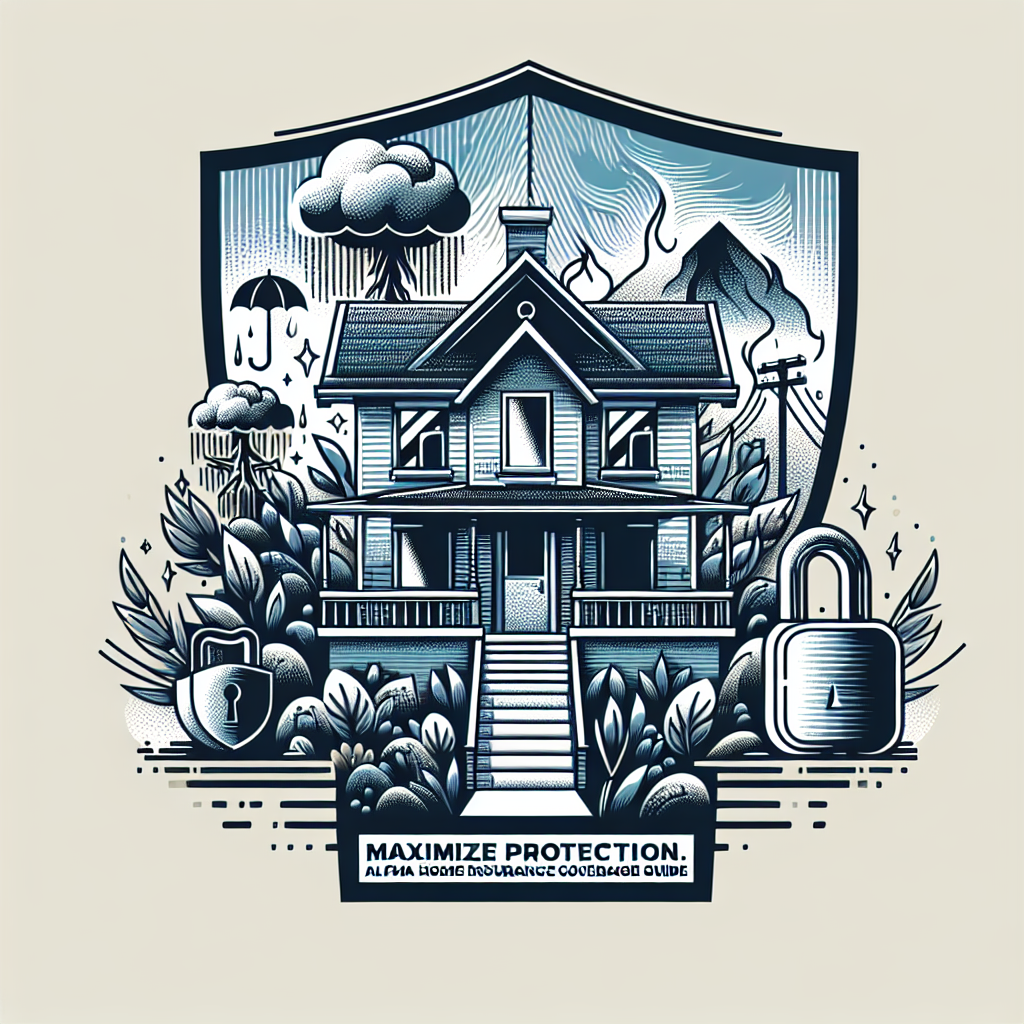Filed under Home Insurance on
USAA Home Insurance Policy Coverage Explained

If you serve, have served, or share a household with someone who has, the right homeowners insurance does more than protect your house—it protects your way of life. Choosing a carrier known for military-focused benefits can make a meaningful difference when the unexpected happens. This guide delivers USAA Home Insurance Policy Coverage Explained in plain language, so you know what is typically covered, what usually isn’t, which upgrades to consider, and how to tailor a policy that fits your home, your budget, and your unique risks.
Who USAA Serves and Whether You Qualify
USAA membership is available to active-duty military, Guard and Reserve, veterans who have separated or retired with an honorable discharge, and eligible family members. That membership is your gateway to banking, insurance, and investment products, including homeowners coverage. If you’re not sure whether you qualify, check USAA’s current eligibility criteria and confirm all household members who should be named on the policy.
USAA Home Insurance Policy Coverage Explained: Core Protections
Most USAA homeowners policies follow the industry-standard structure of an HO-3 or similar form, with coverage sections designed to protect your dwelling, belongings, and financial wellbeing. While policy language varies by state, you’ll typically see the following parts:
Dwelling (Coverage A)
- Covers the home’s structure—walls, roof, built-in appliances, and attached structures like an attached garage.
- Limits should reflect the cost to rebuild at today’s labor and material prices, not the real estate market value. This is known as “replacement cost.”
- Inflation guard or extended replacement cost options can help if rebuild costs surge after a catastrophic event.
Other Structures (Coverage B)
- Applies to detached structures such as a shed, fence, or detached garage.
- Typically 10% of your dwelling limit by default, but you can adjust up if you have significant outbuildings.
Personal Property (Coverage C)
- Protects your belongings—furniture, electronics, clothes, appliances, and more—anywhere in the world.
- Policies often cover personal property at “actual cash value” (depreciated) by default; opt for “replacement cost” coverage so you can replace items with new, similar ones without depreciation.
- Certain categories have sub-limits (jewelry, watches, firearms, collectibles). Consider scheduling valuable items to ensure full protection.
Loss of Use (Coverage D)
- Helps pay for additional living expenses if your home is uninhabitable after a covered loss—think temporary housing, increased meal costs, and laundry.
- Keep receipts and track the difference between normal and increased expenses.
Personal Liability (Coverage E)
- Covers bodily injury or property damage you’re legally responsible for, like a guest slipping on icy steps.
- Limits commonly start at $100,000, but many households benefit from $300,000 to $500,000 or more. If you have substantial assets or future earnings to protect, consider a personal umbrella policy.
Medical Payments to Others (Coverage F)
- Pays for minor medical bills if someone is injured on your property, regardless of fault.
- Often used to resolve minor incidents quickly and amicably.
What Perils Are Covered, and What’s Not
An HO-3-style policy typically covers your dwelling for “open perils” (any cause of loss not specifically excluded) and your belongings for “named perils” (such as fire, theft, wind, and vandalism). Common exclusions include flood, earth movement (earthquake, landslide), wear and tear, pests, and power failure. Water backup and equipment breakdown often require add-on endorsements. For a precise list, refer to your state-specific policy form.
Industry sources like the Insurance Information Institute note that flood is not covered by standard homeowners insurance. Many USAA members purchase a separate flood policy through the National Flood Insurance Program (NFIP) or a private market option. Earthquake coverage, if available in your state, is typically an add-on with a separate deductible.
Popular Endorsements to Consider
USAA Home Insurance Policy Coverage Explained would be incomplete without exploring common add-ons. These endorsements can significantly close coverage gaps:
- Replacement Cost on Personal Property: Upgrades your belongings coverage from depreciated value to full replacement value.
- Scheduled Personal Property: Itemizes valuable items (jewelry, art, firearms, collectibles) for their full value; often includes accidental loss.
- Water Backup and Sump Overflow: Covers damage from backups originating off-premises or due to sump pump failure.
- Equipment Breakdown: Helps repair or replace home systems and appliances from mechanical or electrical failure not due to normal wear.
- Home Sharing or Short-Term Rental Coverage: If you rent rooms or your entire home on platforms, you may need a specific endorsement or a different policy form.
- Ordinance or Law Coverage: Pays for additional costs required to meet current building codes during a rebuild after a covered loss.
- Extended or Guaranteed Replacement Cost: Provides an extra cushion above your dwelling limit if rebuilding proves more expensive than expected.
- Identity Theft and Cyber Protection: Increasingly popular as households rely on connected devices and digital accounts.
USAA Advantages for Military Households
While coverage varies by location and policy, USAA is known for benefits tailored to service members and veterans. Examples often include:
- Military Uniforms Coverage: Some policies provide unique protection for uniforms and certain gear, potentially with a waived deductible if damaged during service. Confirm details with USAA, as terms differ by state and rank.
- World-Wide Belongings Protection: When you’re stationed abroad or traveling, personal property coverage may follow you, subject to policy conditions.
- Flexible Communication and Claims Tools: USAA’s digital-first approach and mobile app can simplify documentation, inventorying, and claims—especially helpful during PCS moves.
- Bundling Across Military-Focused Products: Combining home, auto, and valuable personal property coverage with one carrier can provide both convenience and potential savings.
Industry studies frequently show USAA ranking highly in customer satisfaction; however, some reports exclude USAA from official rankings due to restricted eligibility. Still, strong satisfaction scores and a claims-first culture are cited as recurring strengths in consumer surveys.
Deductibles, Wind/Hail, and Catastrophe Considerations
Your deductible is what you pay out-of-pocket before insurance responds. A higher deductible typically means a lower premium—but make sure it’s an amount you could comfortably pay tomorrow if a loss occurs.
- All-Perils Deductible: A flat amount (for example, $1,000) that applies to most covered losses.
- Wind/Hail or Hurricane Deductible: In many states, wind or hurricane losses have a separate percentage deductible (e.g., 1% to 5% of your dwelling limit). Review your declarations page to avoid surprises.
- Named Storm vs. Hurricane Triggers: Some states use different definitions. Understand what event activates your special deductible.
As catastrophic weather trends intensify, more insurers are using percentage-based deductibles or roof-surface depreciation endorsements in high-risk areas. USAA members should regularly review deductibles and roof endorsements, especially if local severe weather frequency is increasing.
How Much Coverage Do You Need?
Getting USAA Home Insurance Policy Coverage Explained is only useful if you can translate it into the right limits for your situation. Use this step-by-step approach:
- Estimate Rebuild Cost: Ask your agent to run a replacement cost estimator that factors in local materials, labor, square footage, and features. Adjust when you upgrade kitchens, add decks, or finish basements.
- Inventory Your Belongings: Use a home inventory app or USAA’s tools to record major items, serial numbers, and receipts. This makes choosing a personal property limit and filing claims far easier.
- Value High-Risk Categories: If you own jewelry, watches, or collectibles, ask about sub-limits and consider scheduling items.
- Choose Adequate Liability Limits: Consider your home equity, savings, and future earnings. Many financial planners suggest at least $300,000; high-net-worth households often carry $500,000 or more, plus an umbrella policy.
- Assess Loss of Use Needs: Families, pets, special diets, and local rental rates affect how much you’ll need while your home is restored. Choose a limit that realistically covers months of temporary housing after a major loss.
Claims: How They Work and How to Avoid Problems
Filing a claim is stressful, but good preparation makes the process smoother. Here’s how to set yourself up for success:
- Document Damage Immediately: Take photos and videos of all affected areas and items. Don’t discard anything until the adjuster sees it unless required for safety.
- Prevent Further Damage: Make reasonable temporary repairs (tarp a roof, stop a leak). Keep receipts—these are usually covered under “reasonable repairs.”
- Use Your Inventory: Provide your pre-loss inventory to speed up settlement for personal property.
- Get Multiple Estimates: If the repair scope is complex, gather estimates from licensed contractors and share them with your adjuster.
- Understand Depreciation and Recoverable Depreciation: Many claims pay an initial actual cash value; you recover withheld depreciation after completing repairs or replacement according to policy timelines.
Consumer protection agencies and state insurance departments advise policyholders to read claim timelines, maintain written communication, and escalate concerns early if a disagreement arises. USAA’s online claims portal and app can streamline documentation and status checks, which is especially helpful for members on deployment or PCS orders.
What Influences the Cost of Your Policy
Premiums are based on your home’s characteristics, location, risk profile, and policy choices. Typical factors include:
- Rebuild Cost and Materials: Larger homes or those with custom finishes cost more to insure.
- Roof Age and Type: Newer impact-resistant roofs can lower premiums; older or wood-shake roofs can raise them.
- Location Risks: Wildfire, hurricane, hail, theft, and proximity to fire hydrants and stations all matter.
- Claims History: Prior claims may increase rates, even if they were on a previous property in certain states.
- Deductible: Higher deductibles reduce premium but increase your out-of-pocket if a loss occurs.
- Discounts and Bundles: Security systems, smart sensors, monitored alarms, claims-free history, and bundling with auto or valuables coverage can create meaningful savings.
According to industry analyses from sources like the Insurance Information Institute and state regulators, home insurance rates have risen due to higher catastrophe losses, reinsurance costs, and inflation in labor and building materials. Keep your policy current and shop periodically while weighing the value of USAA’s military-specific benefits and service reputation.
Ways to Save Without Sacrificing Coverage
- Bundle Strategically: Combine home and auto for multi-policy discounts.
- Harden Your Home: Install monitored alarms, water leak sensors, and fire suppression or smart shutoff systems. Ask about discount eligibility.
- Maintain Your Roof: Regular inspections, prompt repairs, and impact-resistant shingles can lower risk.
- Right-Size Your Deductible: Pick the highest deductible you could pay tomorrow without financial strain.
- Review Annually: Update dwelling limits for home improvements and adjust personal property coverage as your belongings change.
- Avoid Small Claims: Paying out-of-pocket for minor issues can preserve claims-free discounts and protect your long-term rate.
Important Exclusions and Gray Areas
Even the best policy has limits. Keep these common pitfalls in mind:
- Flood: Requires a separate NFIP or private flood policy. Consider flood coverage even outside high-risk zones—many claims occur in moderate-risk areas.
- Earth Movement: Earthquake, landslide, and sinkhole may require separate coverage or endorsements, depending on your state.
- Wear and Tear: Maintenance and gradual damage aren’t covered; stay on top of routine upkeep.
- Mold: Often limited or excluded; remediation can be expensive. Address water issues quickly and ask about mold endorsements where available.
- Business Activities: Home-based businesses and short-term rentals may require endorsements or different policies to cover liability and property.
Industry Trends to Watch
USAA Home Insurance Policy Coverage Explained also means understanding the bigger picture shaping premiums and availability:
- Catastrophe Frequency: NOAA and global reinsurers have documented a rise in costly weather events, pressuring rates and underwriting.
- Rebuild Inflation: Supply chain issues and labor shortages have elevated reconstruction costs, impacting dwelling limits and coverage adequacy.
- Mitigation Incentives: Some markets offer discounts or premium credits for fortified roofs, wildfire defensible space, or water shutoff devices.
- Data-Driven Underwriting: Insurers increasingly use property-level data (roof condition, fire risk) to tailor pricing and coverage eligibility.
Real-World Scenarios
Putting policy language into context can help you spot gaps:
- Hail-Damaged Roof: You may face a wind/hail deductible. If your policy includes roof-surface depreciation, you could receive less than full replacement unless the roof is newer or you selected an upgrade. Consider impact-resistant shingles for future savings.
- Water Leak from a Burst Pipe: Sudden and accidental discharge is typically covered; long-term seepage is not. A water sensor with automatic shutoff can prevent large losses and may net a discount.
- Stolen Jewelry: Coverage could be limited by a sub-limit unless scheduled. Scheduling also often adds “mysterious disappearance” coverage.
- Temporary Evacuation Order: If a civil authority prohibits access due to nearby covered damage (e.g., wildfire), some policies provide loss-of-use benefits for a limited period.
How USAA Compares
While coverage details differ by insurer and state, USAA is frequently praised for claims service, digital tools, and military-specific perks. Consumer studies, including those from J.D. Power, often show strong member satisfaction, although USAA may be listed separately because of its eligibility rules. Still, every household should compare coverage specifics, deductibles, endorsements, and total cost—not just the premium.
Questions to Ask Your Agent
- Is my dwelling limit based on a current replacement cost estimate, and do I have extended replacement cost?
- Do I have replacement cost coverage on personal property, or is it actual cash value?
- What are my sub-limits for jewelry, watches, firearms, and collectibles?
- What triggers my wind/hail or hurricane deductible, and what percentage applies?
- How does my policy handle roof claims—any cosmetic damage exclusions or depreciation?
- Am I covered if I occasionally rent my home or a room? Do I need an endorsement?
- What water damage scenarios are covered or excluded? Is water backup included?
- Are there special protections for military uniforms and gear, and are deductibles waived in those cases?
Common Mistakes to Avoid
- Underinsuring Your Home: Market price is not rebuild cost. Use a professional estimator and update limits after renovations.
- Skipping Valuables Scheduling: Sub-limits on jewelry or art can leave expensive gaps.
- Choosing a Deductible You Can’t Afford: A low premium is little comfort if you can’t pay the deductible.
- Neglecting Flood and Earthquake: Coverage is available separately; consider your proximity to risks.
- Not Reviewing Annually: Life changes—so should your coverage. Revisit limits and endorsements each year.
USAA Home Insurance Policy Coverage Explained in Quick FAQs
Does USAA homeowners insurance cover military uniforms?
USAA has historically offered coverage for military uniforms and certain gear, sometimes with special deductible treatment for active-duty members. Verify details in your state-specific policy and ask your agent how it applies to your rank and duty status.
Is flood covered under a standard USAA home policy?
No. Like most carriers, USAA does not include flood in a standard homeowners policy. Consider an NFIP or private flood policy, even outside high-risk zones.
Do I need extra coverage for short-term renting?
Yes, often. Standard policies may exclude or limit coverage for home-sharing or short-term renting. Ask about endorsements or different policy forms to avoid gaps.
How do I get replacement cost coverage on my belongings?
Ask your agent for the replacement cost endorsement for personal property. This upgrade pays to replace items with new equivalents rather than depreciated values.
What if rebuilding costs spike after a disaster?
Extended or guaranteed replacement cost can provide a buffer above your dwelling limit when material and labor costs surge. Ordinance or law coverage helps when building codes require costlier upgrades.
A Step-by-Step Action Plan
- Confirm Eligibility: Verify USAA membership for you and your household.
- Run a Current Rebuild Estimate: Set dwelling limits based on today’s costs.
- Upgrade Where It Counts: Consider replacement cost on personal property and schedule valuables.
- Tackle Big Exclusions: Evaluate flood, earthquake, and water backup options.
- Align Deductibles with Cash Reserves: Balance savings with affordability.
- Document Your Home: Complete a photo/video inventory and store it offsite or in the cloud.
- Review Annually: After life changes or renovations, update limits and endorsements.
Why This Matters for Military Families
Service life adds variables—deployments, PCS moves, time abroad—making a flexible, well-structured policy invaluable. USAA Home Insurance Policy Coverage Explained helps you anticipate and manage those variables, from protecting uniforms and gear to ensuring your family can stay comfortably housed if a disaster strikes while you’re away. Thoughtful coverage choices turn an insurance policy into a practical support system.
Final Word: Put Knowledge Into Practice
With the fundamentals of USAA Home Insurance Policy Coverage Explained, you can shift from guesswork to strategy. Update your dwelling limit to reflect current rebuild costs, add replacement cost on belongings, schedule high-value items, and address major exclusions like flood. Match deductibles to your cash reserves, and leverage smart home devices, security, and maintenance to reduce risk. Finally, revisit your policy each year and after major life changes—proactive reviews lead to fewer surprises and faster recoveries.
Key Takeaways
- USAA membership opens access to a homeowners policy designed with military families in mind, often with unique benefits for uniforms and gear.
- Core protections include dwelling, other structures, personal property, loss of use, liability, and medical payments—each with adjustable limits.
- Major gaps like flood and earthquake require separate coverage; water backup, equipment breakdown, and scheduled valuables are popular add-ons.
- Deductibles, especially wind/hail or hurricane, can materially affect out-of-pocket costs—know your triggers and percentages.
- Annual reviews, accurate rebuild estimates, and a thorough home inventory help you stay properly insured despite inflation and evolving risks.
As you compare carriers, consider not only price but also service, claims handling, and the fit for military life. With USAA Home Insurance Policy Coverage Explained, you’re better equipped to secure a policy that protects both your home and your peace of mind.





